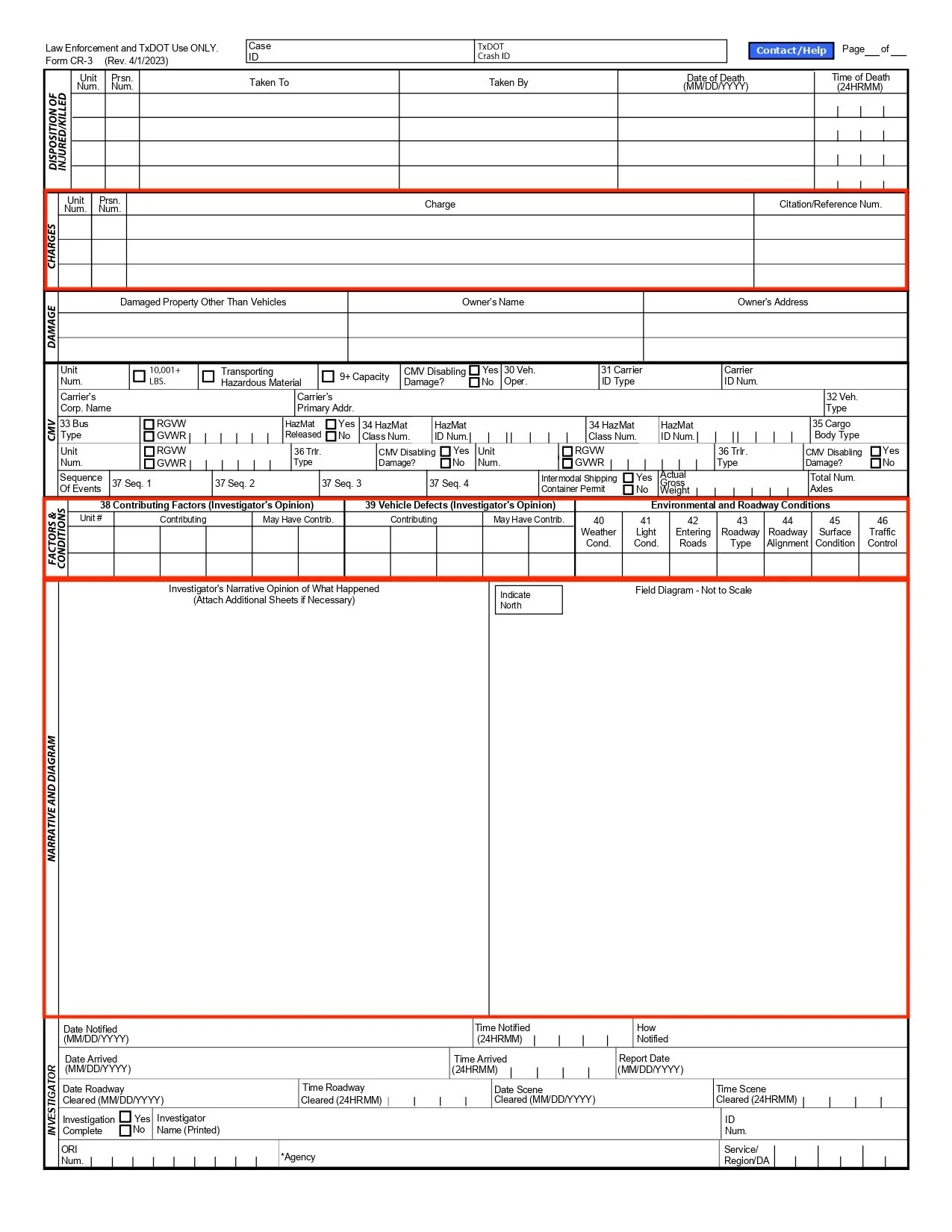Using a Texas Peace Officer’s Crash Report to Prove Fault in an Automobile Insurance Claim
In Texas, the Texas Peace Officer’s Crash Report (also known as the “Form CR-3”) can provide crucial evidence to help establish liability in motor vehicle collisions. Completed by law enforcement officers after a crash, this document offers an authoritative account of the collision, which can be very beneficial when pursuing an automobile insurance claim.
What Does it Mean that Texas is a Fault State?
Texas is a fault-based state, which means that an injured victim must prove that the at-fault driver is legally responsible for the collision before recovering damages from the other driver’s liability policy. In Texas, most injury lawyers use “negligence” as the legal cause of action for automobile crash claims. A driver is negligent when the driver fails to act as a person of ordinary prudence would have under the same or similar circumstances and, in so doing, causes injury to another person.
The Role of a Crash Report in Establishing Fault
Most law enforcement officers receive training to evaluate car crashes and determine which party was at fault. As a result, most Texas injury lawyers use the crash report as evidence of another driver’s fault when pursuing automobile-related insurance claims or lawsuits.
The crash report often includes several key elements that help clarify fault:
Charges Section: Driver Citations - In this section, the investigating officer notes any citations issued to the drivers involved. For example, the office may issue citations for failure to yield the right of way, unsafe lane change, or failure to control speed. If the at-fault driver pleads guilty to a citation, it strengthens the argument that the driver was legally responsible for the crash.
Contributing Factors Section: Officer’s Opinion on Fault - This section includes the investigating officer’s opinion on what factors contributed to the accident. It is important to cross-reference the officer’s opinion with the code sheet to understand the meaning behind these factors. For example, if the officer lists “Unit 1” and includes Factors 22 and 67 as contributing factors, it’s evident using the code sheet that the officer believes the Unit 1 driver’s failure to control speed and alcohol intoxication were the contributing factors that led to the crash.
Narrative and Diagram Section: Officer’s Findings - The narrative section allows the investigating officer to provide a more detailed account of the investigation. Here, the officer may include detailed information about the collision scene, a summary of how the officer believed the collision occurred, any statements made by the drivers and witnesses, or any other information that the officer believes is relevant to the collision.
Contact an Experienced Injury Lawyer ASAP
In practice, most insurance companies accept the responding police officer’s crash report as evidence that the at-fault driver’s negligence caused the collision. Although the crash report is critical, waiting for the investigating officer to complete the report (which may take up to 10 days) could delay your claim and leave room for the at-fault driver’s insurance company to undervalue your case. Additionally, proving that a driver was negligent is only half the battle, as the victim must also establish that the at-fault driver’s negligence caused the victim to incur damages (e.g., medical expenses or physical pain).
An experienced injury lawyer can help develop a claim properly and maximize the client’s recovery by gathering, organizing, and presenting the necessary evidence—including the crash report—to establish the at-fault driver’s negligence, the client’s damages, and the causal relationship between the two. Generally, the longer it takes for an injured victim to hire an attorney, the more likely the insurance company will undervalue the claim, even if the responding officer’s crash report points to the other driver as the contributing cause of the collision. Since most attorneys do not charge for initial consultations, accident victims do not lose much by discussing an injury case with an attorney.
If someone else’s negligence has injured you or a loved one, you have enough things to worry about. Do not let dealing with the at-fault driver’s insurance company be one of them. We deal with the insurance company so you can focus on getting your life back to normal. You have one chance to do this; make the right choice by choosing the right attorney. Call us at (956) 291-7870 or email us at contact@rdjlawyer.com for a free consultation and case evaluation.

